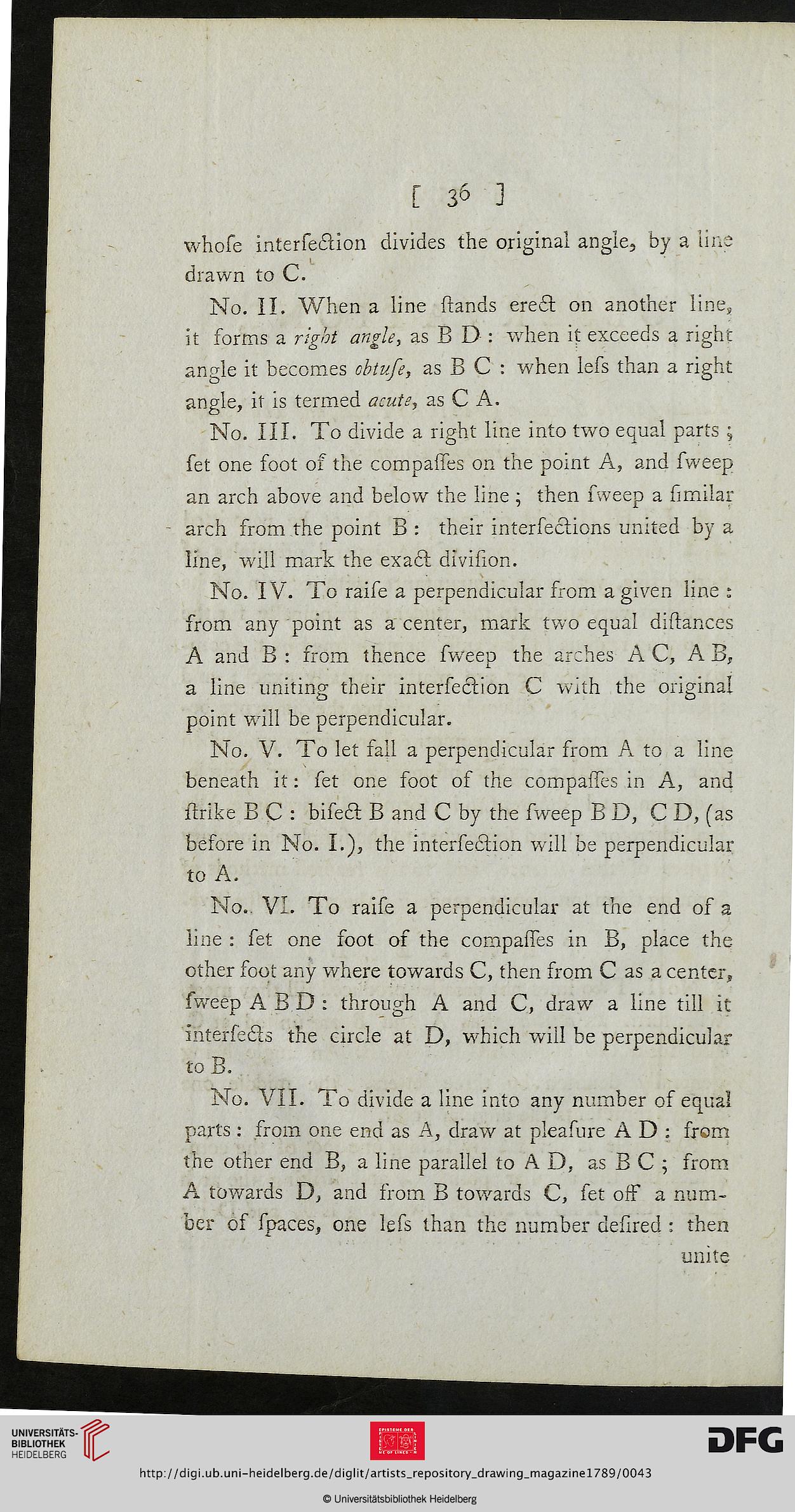[ 36 J
whose inter se&ion divides the original angle, by a line
drawn to C.
No. II. When a line hands ered on another line,
it forms a right angle, as B D : when it exceeds a right
angle it becomes chtufe, as B C : when less than a right
angle, it is termed acute, as C A.
No. III. To divide a right line into two equal parts ;
set one foot os the compasses on the point A, and sweep
an arch above and below the line ; then sweep a similar
arch from the point B : their intersections united by a
line, will mark the exadl division.
No. IV. To raise a perpendicular from a given line :
from any point as a center, mark two equal distances
A and B : from thence sweep the arches AC, A B,
a line uniting their interfeclion C with the original
point will be perpendicular.
No. V. To let fail a perpendicular from A to a line
beneath it: set one foot of the compasses in A, and
slrike B C : bised B and C by the sweep B D, CD, (as
before in No. I.), the interseclion will be perpendicular
to A.
No. VI. To raise a perpendicular at the end of a
line : set one soot os the compasses in B, place the
other foot any where towards C, then from C as a center,
sweep A B D : through A and C, draw a line till it
interseds the circle at D, which will be perpendicular
toB.
No. VII. To divide a line into any number of equal
parts: from one end as A, draw at pleasure A D : from
the other end B, a line parallel to A D, as B C ; from
A towards D, and from B towards C, set off a num-
ber of spaces, one less than the number desired : then
unite
whose inter se&ion divides the original angle, by a line
drawn to C.
No. II. When a line hands ered on another line,
it forms a right angle, as B D : when it exceeds a right
angle it becomes chtufe, as B C : when less than a right
angle, it is termed acute, as C A.
No. III. To divide a right line into two equal parts ;
set one foot os the compasses on the point A, and sweep
an arch above and below the line ; then sweep a similar
arch from the point B : their intersections united by a
line, will mark the exadl division.
No. IV. To raise a perpendicular from a given line :
from any point as a center, mark two equal distances
A and B : from thence sweep the arches AC, A B,
a line uniting their interfeclion C with the original
point will be perpendicular.
No. V. To let fail a perpendicular from A to a line
beneath it: set one foot of the compasses in A, and
slrike B C : bised B and C by the sweep B D, CD, (as
before in No. I.), the interseclion will be perpendicular
to A.
No. VI. To raise a perpendicular at the end of a
line : set one soot os the compasses in B, place the
other foot any where towards C, then from C as a center,
sweep A B D : through A and C, draw a line till it
interseds the circle at D, which will be perpendicular
toB.
No. VII. To divide a line into any number of equal
parts: from one end as A, draw at pleasure A D : from
the other end B, a line parallel to A D, as B C ; from
A towards D, and from B towards C, set off a num-
ber of spaces, one less than the number desired : then
unite




